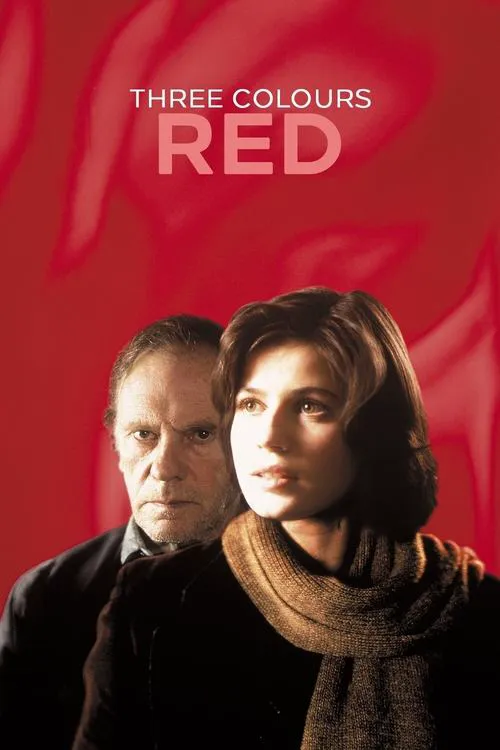Three Colors: Red

Plot
The first installment of Krzysztof Kieślowski's cinematic triptych, "Three Colors: Red," is a poignant exploration of love, guilt, and human connection. The film weaves a delicate narrative that delves into the complexities of relationships, weaving together the lives of its two main characters, Valentine and Judge Krzysztof Kieślowski. At its heart, "Three Colors: Red" revolves around Valentine (played by Irène Jacob), a free-spirited, charming, and beautiful part-time model. Her life appears to be a series of carefree moments, filled with laughter and adventure. However, beneath her captivating facade lies a deep sense of loneliness and disconnection. Valentine's world is one of superficial relationships, shallow conversations, and a general disinterest in the world around her. Her life takes an unexpected turn when she accidentally runs over the dog of a retired judge, Joseph (played by Jean-Louis Trintignant). Initially, Valentine is mortified by the incident and expects the worst. Instead, she is met with a detached indifference from the judge, which catches her off guard. The judge's lack of concern for his lost pet only adds to Valentine's distress. In an attempt to make amends, Valentine returns the judge's dog to him and eventually strikes up an acquaintance with the gruff and seemingly unfeeling Joseph. As they spend more time together, Valentine discovers that her initial perception of the judge was far from accurate. Beneath his tough exterior lies a complex individual burdened by the weight of his own secrets and guilt. It is not until Valentine returns to Joseph's house, intent on borrowing something, that she inadvertently stumbles upon a deeply personal aspect of his life. While rummaging through the house, she catches him listening to his neighbors' phone calls through a hidden microphone. This discovery not only reveals a shocking aspect of the judge's character but also serves as a catalyst for their blossoming friendship. Through a series of chance encounters and whispered conversations, Valentine and Joseph slowly begin to form a deep connection. Their relationship evolves into a complex dance of shared vulnerability, mutual understanding, and a deep-seated desire for human connection. As Valentine peels away the layers of the judge's stoic exterior, she begins to grasp the complexities of his inner life. The film's narrative skillfully interweaves the lives of its two main characters, creating a rich tapestry of emotions and thoughts. Kieślowski masterfully employs the color red as a visual motif to underscore the themes of love, passion, and human connection. Whether it is the vibrant red dresses Valentine dons, the bold red paint she applies to the judge's fence, or the fiery passion she ignites in her relationships, the color red becomes an integral part of the film's language. Moreover, "Three Colors: Red" pays homage to the French New Wave, a cinematic movement that celebrated the beauty of everyday life and the power of the human spirit. Kieślowski's film echoes the style and sensibilities of his French New Wave predecessors, such as Éric Rohmer and Claude Chabrol, who similarly sought to capture the nuances of human experience in their films. Ultimately, "Three Colors: Red" is a film about the human capacity for love, guilt, and redemption. It is a poignant exploration of how two souls, connected by chance, find common ground in their shared experiences and vulnerabilities. Valentine and Joseph's relationship may appear to be a fleeting moment in time, but it has a profound impact on the lives of those around them.
Reviews
Recommendations




